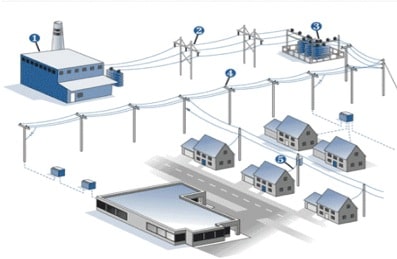Electric Grid
ARPA-E Micro-Synchrophasors for Distribution Systems
Electric power “twists” as it moves through the grid. Micro-Synchrophasors in Distribution Systems let us directly observe this twist, a new parameter for monitoring the flow of power and grid stability.
Micro-synchrophasors (µPMUs) measure the change in voltage phase angle – the amount of “twist” – as power flows down distribution lines. Data from a network of these ultra-high-precision devices each coupled to a power-disturbance recorder, give us new capabilities to gauge and control power flow.
Until now, our ability to diagnose power distribution systems has been limited, impeding our response to changing situations and opening the door to power failures. Micro-synchrophasors will enable real-time monitoring and two-way communication with the grid – key to preventing system failures and outages, sharpening demand response, and integrating distributed, intermittent renewable energy
Power outages in the U.S. cost an estimated $119 billion annually, and 92% of them originate in the distribution system. By putting networks of µPMUs to work, researchers expect that reliability can improve by as much as 50%, saving significant dollars while enabling aggressive deployment of zero-carbon solar, wind, and other renewable energy.
This first-of-its-kind project was funded by a $4 million grant from the U.S. Department of Energy’s Advanced Research Projects Agency-Energy (ARPA-E), supporting innovations that could yield game-changing breakthroughs in energy technology and form the basis of entirely new industries. Since completion of the plus-up phase in 2018, project partner Power Standards Lab (PSL) became Powerside, Inc., which sells the micro-PMU to utilities worldwide.

